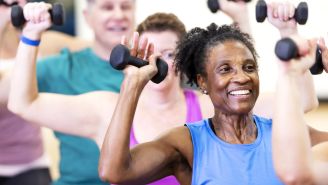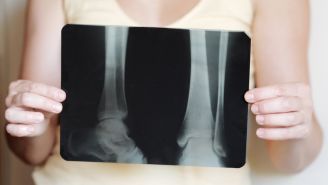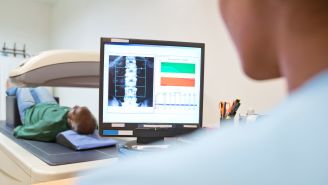Updated on April 29, 2024.
If you have osteoporosis, you may be tempted to take it easy on your bones. And in some ways, you should. But that doesn’t mean you need to sit totally still, all the time. In fact, staying physically active may be more important than ever.
Why? Osteoporosis causes your bones to become weak and brittle. Exercise helps to slow this deterioration and builds strong muscles to support your body. Being fit and flexible can also help you maintain mobility and reduce your risk of falls—something to consider, especially as the years pass.
On the other hand, not getting much movement can weaken muscles and raise the risk of bone breaks. This can make it tough to move around, and eventually, to maintain your independence.
So, it helps to exercise—as long as you’re safe and smart about it.
Exercise ideas for osteoporosis
So what kind of exercise is best for bones? That's a question to pose first to a healthcare provider (HCP). They may want to devise a physical activity program specifically for you—one that takes into account personal factors like:
- Age
- Sex
- Height and weight
- Physical abilities and fitness
- General health status and other chronic conditions
- The severity of your osteoporosis
Ideally, your program will be gentle on your frame, strengthen your body, and improve your balance. It will likely include a variety of activities, such as the following.
Weight-bearing exercises. A brisk walk on the treadmill, climbing a few flights of stairs, and dancing can improve your stamina. Since they also force you to carry your own body weight, they help tone your muscles and increase balance and coordination.
For adults, experts recommend 150 minutes of moderate-intensity cardio activity or more each week, spread across several days. That translates to at least 20 or 30 minutes per day. But don’t worry if you aren’t able to do that much exercise, or if you need to start small and work your way up. Every bit of movement helps.
Strength-training exercises. These activities involve resistance, or working your muscles against an opposing force. They include:
- Working out with elastic bands
- Using weight machines
- Lifting free weights
- Body-weight exercises
Resistance is good for osteoporosis because it helps preserve bone mass and protect against muscle loss, a common problem as we get older. Resistance exercises also reduce the risk of falls.
General recommendations are to strength train about two or three times weekly. But follow your HCP's advice, and beware of trying to lift too much weight, too quickly. If you’re just beginning, use lighter weights and do fewer repetitions. You can increase both as you are able.
Balance and flexibility exercises. Activities such as tai chi and stretching can keep your muscles limber and reflexes loose. As a bonus, they also work to sooth nerves and improve mood, which can benefit your overall quality of life.
Note that it’s important to speak with an HCP before beginning any flexibility program—especially yoga—since certain movements can stress bones.
How to exercise safely with osteoporosis
It’s a wise idea for many people with osteoporosis to avoid certain activities. These include:
- Sit-ups, crunches, and other exercises that involve bending at the waist
- High-impact sports or sports with a high risk of falling, such as skiing, hockey, or football
- Activities that involve forceful twisting, such as golf, tennis, or using a batting cage
Regardless of what activity you choose, doing it the correct way and with the proper protective gear is essential. Always follow your HCP's guidance regarding what kinds of exercises you can do, what activity level is best, and ways to exercise safely.






